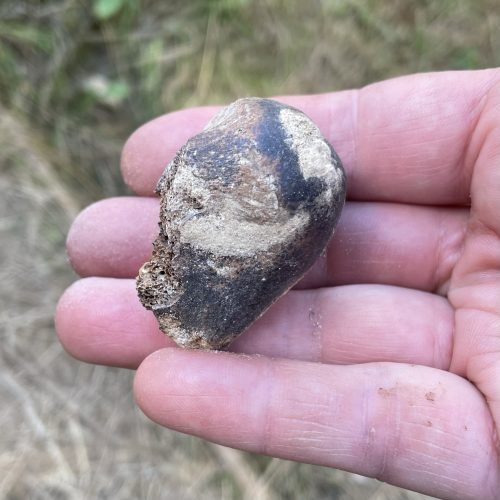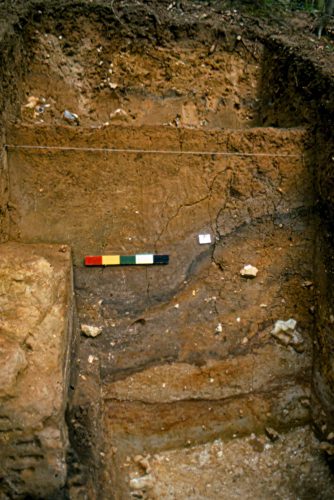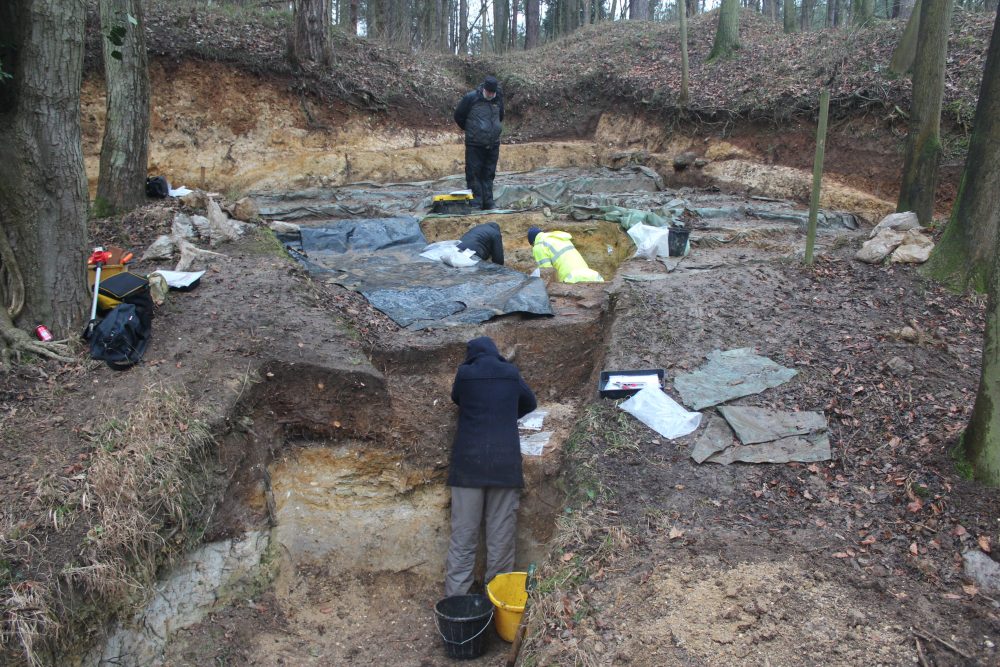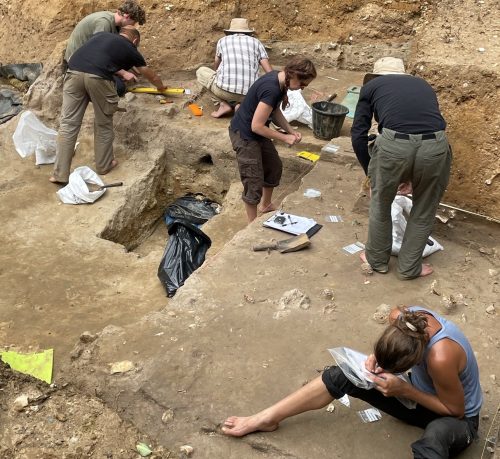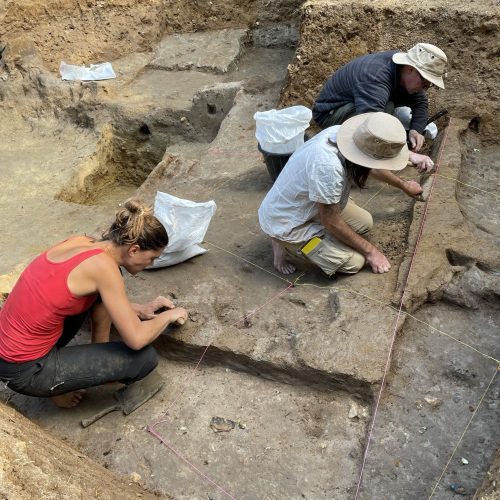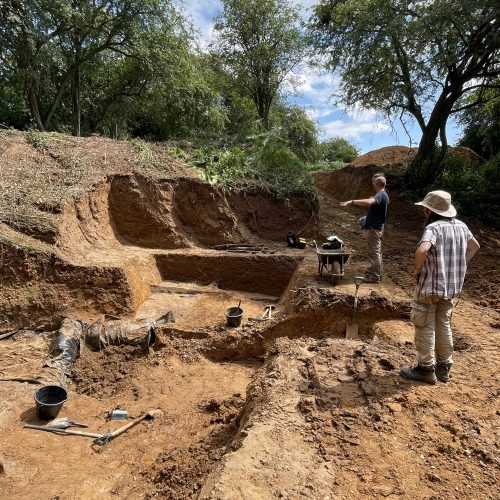PAB researcher and dig director Dr Rob Davis reflects on this season’s fieldwork at Devereux’s Pit
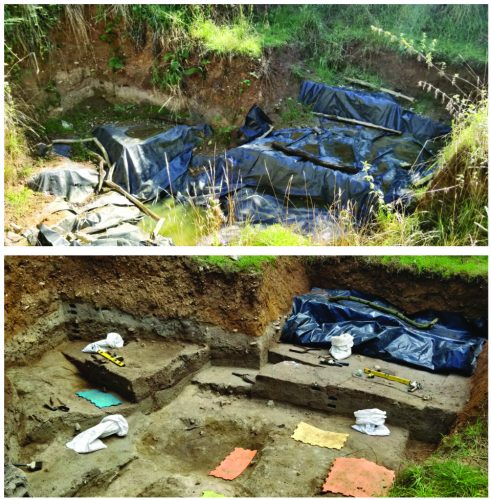
There is always excitement at the beginning of a new field season, but following a very wet start to the summer, there was also a certain amount of trepidation as we headed off for another three weeks excavating at the Lower Palaeolithic site of Devereux’s Pit in Suffolk. Will it ever stop raining? What state will the site be in? But then, just as we arrived, the sun emerged and a small team of PAB researchers and volunteers set about recovering the site – bailing out water, cutting back vegetation, peeling off protective sheeting, and cleaning sections – and within 24 hours we were ready to excavate.
Towards the end of the 2022 season, we had noticed a change in the archaeology as we excavated deeper into the sedimentary sequence in Area I. Whereas previously we had encountered flint flakes characteristic of handaxe manufacture, these were absent from the lower deposits, which instead contained large patinated flakes that had been removed from cores using hammerstones. A primary aim for the 2023 excavation was to excavate more of the lower deposits to increase the size of the assemblage and see if the pattern held.
This season’s excavations focused on three aspects of the site. In Area I, excavation of the lower part of the sequence continued to produce archaeology, including more than 400 cores and flakes, with no hint of handaxe manufacture. Some of the flakes have been modified through retouch to their edges to create a variety of tools, particularly notches and denticulates. We also extended our excavations to the west to create a new section through the sediments and fully establish the sedimentary succession across Area I. A further eight boreholes were drilled to supplement boreholes drilled in 2021 and 2022. Together, the new boreholes and section will enable us to tie in the stratigraphy in Area I to our developing deposit model for the site. Recovery of Bithynia opercula from borehole samples has enabled use of the amino acid racemisation (AAR) dating method. The results indicate that the interglacial sediments at the site were deposited during MIS 11 (c. 400,000 years ago). Working out precisely how the sediments that contain the stone tool assemblages in Area I relate to the boreholes with the opercula, and other faunal material, is critical for establishing the age and environment of early human occupation at the site.

Perhaps the most surprising discovery of the season came from one of the boreholes. The cores were extracted in 1 m long plastic tubes. Amazingly, a very well-preserved piece of fossilised bone was sticking out of the end of one of the core lengths. The bone is the head of a deer femur, and is from sediments 2 m below the surface, and just a few metres away from Area I. The sediments in Area I are decalcified and bone has not survived in this area. This new discovery gives us a great target for further excavation, and the recovery of more fossils with which to develop our understanding of the local environment in which early humans lived 400,000 years ago.
